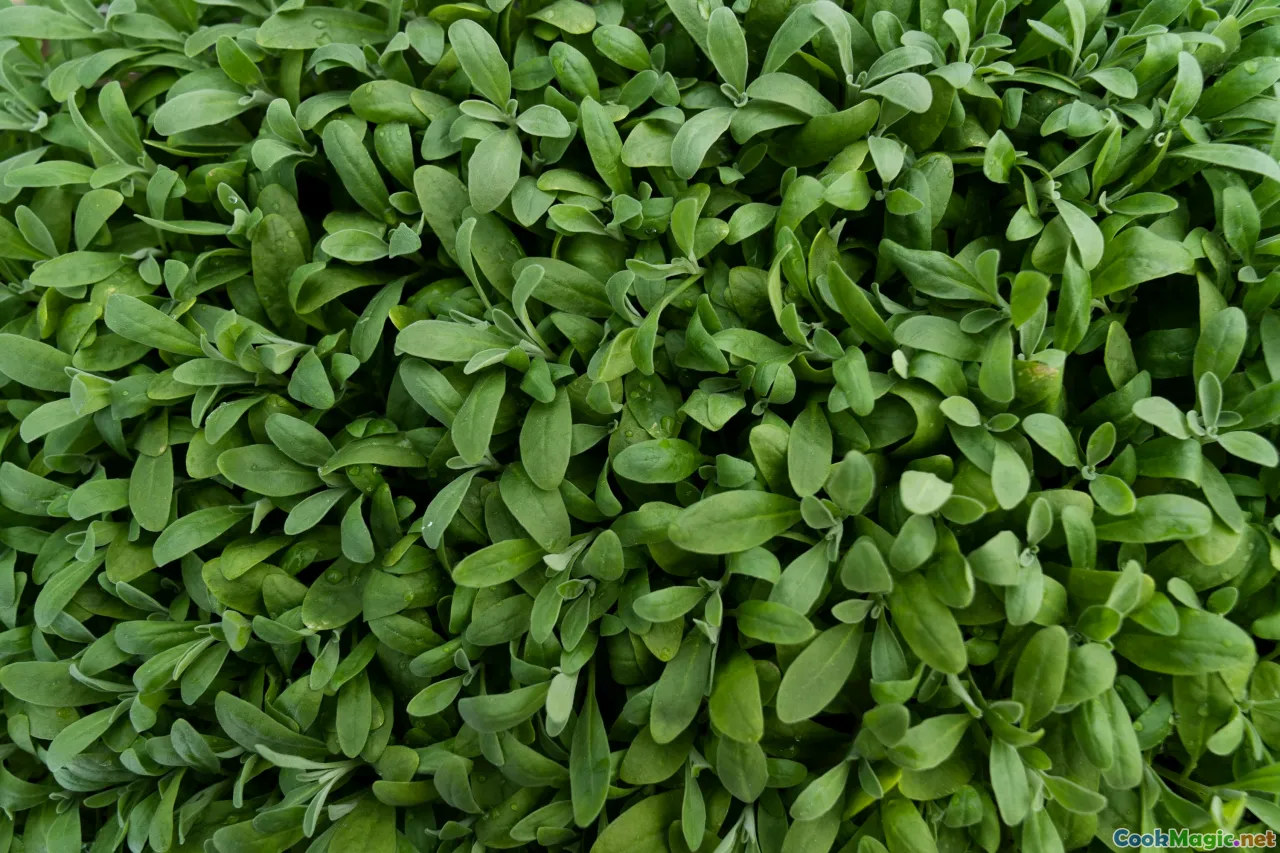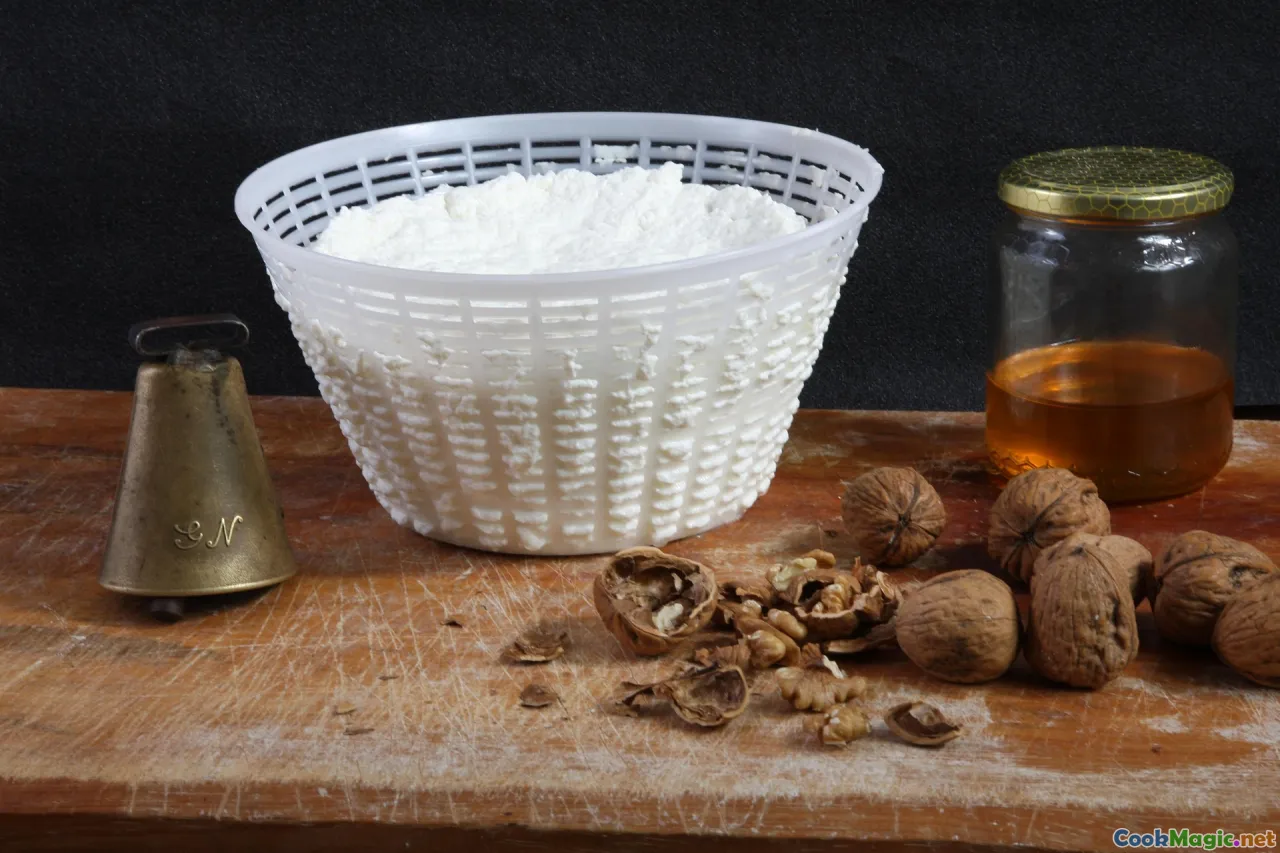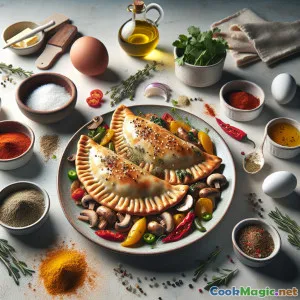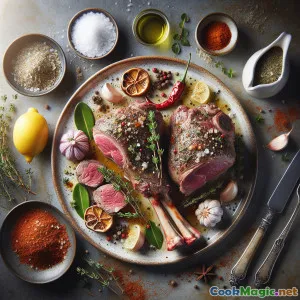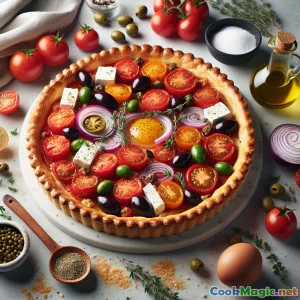
Goldene Argentinische Spinat- & Ricotta-Kroketten
(Golden Argentine Spinach & Ricotta Croquetas)
(0 Bewertungen)0
1,014
Juli 15, 2025
Problem melden
Zutaten
-
300 grams Frischer Spinat
(Gewaschen und gehackt)
-
200 grams Ricotta-Käse
(Vollfett, abgegossen.)
-
1 medium Rote Zwiebel
(Fein gewürfelt)
-
2 large Ei
(Aufteilen, eine für die Mischung, eine für die Beschichtung)
-
150 grams Semmelbrösel
(Frisch oder getrocknet, aufgeteilt)
-
50 grams Weißmehl
(Zum Binden und Panieren)
-
0.25 tsp Muskatnuss
(Frisch gerieben, wenn möglich)
-
0.5 tsp Schwarzer Pfeffer
(Frisch gemahlen)
-
1 tsp Salz
(Feines Meersalz)
-
2 tbsp Petersilie
(Fein gehackt)
-
2 tbsp Chimichurri
(Zum Servieren, optional)
-
500 ml Sonnenblumenöl
(Zum Frittieren)
(Gewaschen und gehackt)
(Vollfett, abgegossen.)
(Fein gewürfelt)
(Aufteilen, eine für die Mischung, eine für die Beschichtung)
(Frisch oder getrocknet, aufgeteilt)
(Zum Binden und Panieren)
(Frisch gerieben, wenn möglich)
(Frisch gemahlen)
(Feines Meersalz)
(Fein gehackt)
(Zum Servieren, optional)
(Zum Frittieren)
Nährwerte
- Portionen: 4
- Portionsgröße: 3 Kroketten (ca. 175 g)
- Calories: 377 kcal
- Carbohydrates: 32 g
- Protein: 13 g
- Fat: 22 g
- Fiber: 3 g
- Sugar: 3 g
- Sodium: 817 mg
- Cholesterol: 77 mg
- Calcium: 235 mg
- Iron: 2.1 mg
Anweisungen
-
1 - Spinat vorbereiten:
Den gehackten Spinat 2 Minuten lang in kochendes Wasser blanchieren. Sofort in kaltes Wasser tauchen, abtropfen lassen und überschüssige Feuchtigkeit ausdrücken. Grob erneut hacken.
-
2 - Die Aromen anbraten:
Geben Sie die gewürfelte rote Zwiebel in etwas Sonnenblumenöl bei mittlerer Hitze an und braten Sie sie, bis sie weich und durchscheinend ist. Etwas abkühlen lassen.
-
3 - Füllungsmix kombinieren:
In einer großen Schüssel Spinat, Ricotta, sautierte Zwiebel, 1 Ei, Petersilie (falls verwendet), Muskatnuss, die Hälfte der Semmelbrösel (Rest für die Panierung aufheben), Salz und Pfeffer vermengen. Gut verrühren, bis alles gleichmäßig verbunden ist.
-
4 - Die Kroketten formen:
Mit feuchten Händen portionsweise die Mischung aufnehmen und zu 12-16 kleinen Zylindern oder Bällchen formen. Falls die Mischung zu feucht ist, vorsichtig etwas Mehl hinzufügen.
-
5 - Die Kroketten panieren:
Restliche Semmelbrösel und Mehl in separate Schüsseln geben. Das verbleibende Ei in einer dritten Schüssel verquirlen. Jede Krokettenrolle zuerst in Mehl, dann im Ei und schließlich in den Semmelbröseln wenden, um eine knusprigere Oberfläche zu erhalten.
-
6 - Vor dem Frittieren ruhen lassen:
Legen Sie die panierten Kroketten auf ein Backblech und kühlen Sie sie 10 Minuten im Kühlschrank, um sie zu festigen. Das hilft, die Form beim Frittieren zu bewahren.
-
7 - Perfekt braten:
Erhitze Sonnenblumenöl (ca. 4 cm tief) auf 180°C (350°F). Frittieren Sie die Kroketten in kleinen Portionen für etwa 2–3 Minuten pro Seite, bis sie tief goldbraun sind. Auf Küchenpapier abtropfen lassen.
-
8 - Servieren und Genießen:
Warm servieren, garni mit einem Schuss Chimichurri oder deinem Lieblings-Dip. Genießen Sie es als Vorspeise, Partysnack oder Abendessen.
Den gehackten Spinat 2 Minuten lang in kochendes Wasser blanchieren. Sofort in kaltes Wasser tauchen, abtropfen lassen und überschüssige Feuchtigkeit ausdrücken. Grob erneut hacken.
Geben Sie die gewürfelte rote Zwiebel in etwas Sonnenblumenöl bei mittlerer Hitze an und braten Sie sie, bis sie weich und durchscheinend ist. Etwas abkühlen lassen.
In einer großen Schüssel Spinat, Ricotta, sautierte Zwiebel, 1 Ei, Petersilie (falls verwendet), Muskatnuss, die Hälfte der Semmelbrösel (Rest für die Panierung aufheben), Salz und Pfeffer vermengen. Gut verrühren, bis alles gleichmäßig verbunden ist.
Mit feuchten Händen portionsweise die Mischung aufnehmen und zu 12-16 kleinen Zylindern oder Bällchen formen. Falls die Mischung zu feucht ist, vorsichtig etwas Mehl hinzufügen.
Restliche Semmelbrösel und Mehl in separate Schüsseln geben. Das verbleibende Ei in einer dritten Schüssel verquirlen. Jede Krokettenrolle zuerst in Mehl, dann im Ei und schließlich in den Semmelbröseln wenden, um eine knusprigere Oberfläche zu erhalten.
Legen Sie die panierten Kroketten auf ein Backblech und kühlen Sie sie 10 Minuten im Kühlschrank, um sie zu festigen. Das hilft, die Form beim Frittieren zu bewahren.
Erhitze Sonnenblumenöl (ca. 4 cm tief) auf 180°C (350°F). Frittieren Sie die Kroketten in kleinen Portionen für etwa 2–3 Minuten pro Seite, bis sie tief goldbraun sind. Auf Küchenpapier abtropfen lassen.
Warm servieren, garni mit einem Schuss Chimichurri oder deinem Lieblings-Dip. Genießen Sie es als Vorspeise, Partysnack oder Abendessen.
Mehr über: Goldene Argentinische Spinat- & Ricotta-Kroketten
Croquetas de Espinaca y Ricota Salteña: A Taste of the Andes in a Bite
In the colorful and festive landscapes of Argentina’s northwest, especially in the charming city of Salta, you’ll often find a surprising bite that locals adore: savory croquetas made with spinach and creamy ricotta. While croquetas have Spanish origins, the Salteña version draws inspiration from Andean ingredients and Argentine culinary exuberance—tailoring fillings based on what is seasonally abundant or regionally favorite. This unique fusion shines bright in the marriage between mild, earthy spinach and lush, tangy ricotta cheese, gently seasoned and fried to a deliciously crisp golden brown.
The Roots and Versatility of Croquetas
Croquettes, or "croquetas" as they’re affectionately known in Latin America and Spain, traveled to South America with Spanish colonists but quickly evolved with local flavors. Argentine cooks, especially in the north, set their croquettes apart by blending classic techniques with New World ingredients. Spinach flourishes in the temperate valleys of Salta, and ricotta—blended from cow or goat’s milk—matches the soft, smooth textures beloved on the Argentine table.
Result? The texture is both creamy and substantial, sometimes even seasoned further with Andean spices or fresh wild herbs. Some Salteños add native cheeses or even a splash of chimichurri or native hot sauce. Served warm at gatherings, family tables, or street festivals, these croquetas capture the soul of a cuisine determined by climate, migration, and celebration.
Preparation Tips & The Little Secrets
- Drain Your Ricotta! Excess moisture can make the mixture soggy and difficult to shape. Dry curds work best.
- Resting before frying—a classic trick to maintain croquette shape during frying for perfectly crisp exteriors and creamy interiors.
- Play with the Bread Coating: If available, try using Argentine-style "pan rallado" (very fine dry breadcrumbs), for an ultra-light crust.
- Add Local Flair: A teaspoon of regional spice blends, such as ground smoked paprika or even a touch of ají molido, would elevate the croquetas further.
Eating, Sharing, Enjoying
Enjoy Croquetas de Espinaca y Ricota Salteña as appetizers alongside a small glass of Torrontés wine, or serve them tucked onto a big antipasto platter for a party. They freeze beautifully—just reheat gently under foil in an oven at 180°C. Dipping sauces are nearly essential: classic Argentine chimichurri reflects the nation’s passion for vibrant chimichurri sauce. Creole-inspired salsas or even a tomato-based dipping sauce work brilliantly.
Unique Aspects and History
What makes this recipe especially unique is the blend of cultures it embodies. Salta's cuisine is an extraordinary convergence of indigenous Andean techniques, Spanish influences, and the unending creativity of the local cooks. Ricotta, a cheese born from Italian influence, has tucked itself deeply into the Argentinian culinary identity, and when paired with a prolific local spinach crop, the results are irresistible.
The croquetas’ shape—cylinder or ball—depends on the cook’s family traditions. Some shape them larger as a main course, and some tiny for cocktail parties; both approaches honor hospitality and an economy with resources, ensuring every bit of harvest or cheese is put to hearty use.
Final Thoughts
Cooking these croquetas invites play and adaptation: switch up the herbs, exchange the spinach for chard or beet greens, stuff with a cube of hard cheese, or spice up the filling to your family’s taste. The satisfaction of crisp, golden bites filled with creamy, melt-in-your-mouth interiors reminds us that some of the world’s best treats are not fancy—they are made with love, with what the land generously provides, and meant to be shared.
If you’ve ever wanted a taste of northern Argentina in your kitchen, let Croquetas de Espinaca y Ricota Salteña be your invitation! ¡Qué aproveche!


